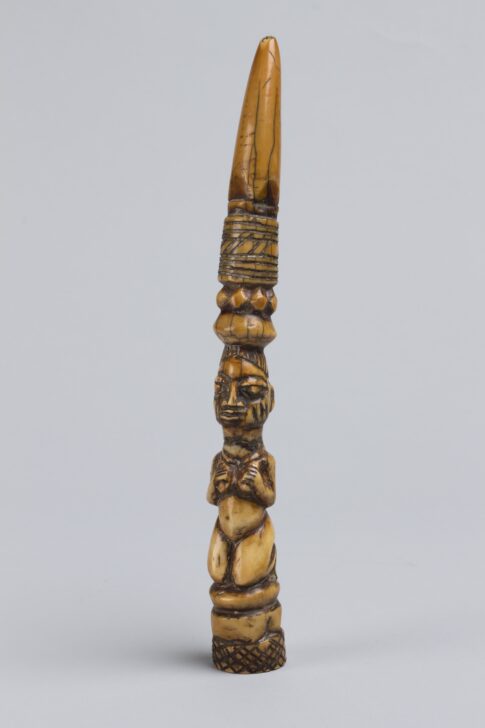Ifa Divination Tapper
Yoruba

Description
Subject Matter:
Before a babaláwo, or diviner, began the process of divination or Ifa, a tapper was used on the divination tray to call Orunmila, the god of wisdom responsible for divination. Usually made from wood or ivory, the tapper, called iroke ifa, was also used to add rhythm to the babaláwo's chants. The form of the tapper helped invoke Orunmila through the stance of the woman carved in the middle, whose kneeling position, ikunle, was a gesture of respect. The conical shape also recalled ibori, the shrine to the inner head, or ade, an oba's crown. Both were associated with ori inu, a person's inner head that held great power, or ase. Just as Yoruba peoples sought the knowledge of their personal destiny, housed in their ori inu, the diviner also used the head of the tapper to gain knowledge of the universe through divination.
References Cited:
Doris, David. 2004. Yoruba Images and Aesthetics. Ann Arbor, MI: University of Michigan Museum of Art.
Drewal, Henry John, John Pemberton and Rowland O. Abiodun. 1989. Yoruba: Nine Centuries of African Art and Thought. New York: Center for African Art.
Lawal, Babatunde. 2012. Visions of Africa: Yoruba. Milan: 5 Continents Editions.
Physical Description:
Ivory rod with a round base and a pointed tip. A carved female figure kneels near the bottom of the rod. Above and below her are rows of various carved geometric patterns. A portion of the piece is hollow and there is an intentional hole at the base.
Usage Rights:
If you are interested in using an image for a publication, please visit https://umma.umich.edu/request-image/ for more information and to fill out the online Image Rights and Reproductions Request Form.